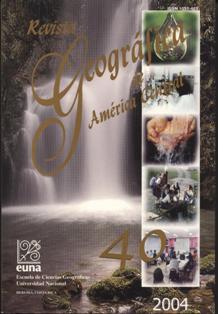UN PLAN PARA RECUPERAR LOS RÍOS Y ACUÍFEROS DEL VALLE CENTRAL
Keywords:
Population growth, river restoration, Central Valley of Costa Rica, Crecimiento demográfico, recuperación de ríos, Valle Central de Costa RicaAbstract
El mayor consumo de agua en Costa Rica ocurre en el Valle Central, pues ahíestá asentada cerca del 60% de la población del país. Sin embargo, la disponibilidad de agua está disminuyendo debido al crecimiento demográfico y al decreciente volumen de los ríos y aguas subterráneas.El Valle Central posee cerca de 57 ríos que podrían utilizarse como fuente de agua potable. pero sólo 10 de ellos tienen sus nacientes ubicadas en bosques primarios y son adecuadas para este fin. Las nacientes de la mayoría de los otros ríos se encuentran en tierras económicamente improductivas, tales como pastizales y áreas de bosques muy alterados, que pierden su volumen de agua durante la estación seca.
Las proyecciones de crecimiento demográfico hasta el año 2100 permiten visualizar un marcado incremento en la demanda de agua, el cual se mantendrá durante los próximos 50 años. Consecuentemente, para proporcionar un adecuado suministro de agua para esta creciente población. es fundamental detener la contaminación de las aguas subterráneas y recobrar el volumen de agua de los ríos.
En este trabajo se propone un plan sencillo para aumentar el volumen de agua de los ríos del Valle Central y para proteger nuestros acuíferos. Se mencionan también otros beneficios económicos y sociales que tendría la aplicación de esta propuesta.
Abstract:
About 60% of the popuiation of Costa Rica lives in the Central Valley where consequcntly occurs the highest water consumption. As a contrast water shortness is increasing in this country due to population growth and diminishing volume of river and subterranean water.
There are about 57 rivers in the Central Valley that could be used as a source of water but only 10 of them have their headwaters inside primary forest and are appropriate for this purpose. The headwaters of mosi of the nvers lay in underproductive lands such as grass fields and very disturbed forest and bose their water volume during dry season.
Population growth estimates until year 2100 allow foreseeing a high rate of increase in water demand for the next 50 years. In order to have an adequate supply of water for ihis expanding population it is mandatory to stop subterranean water pollution and to recovcr nver water volume.
In this paper 1 propose a simple plan to augment the water volume of the headwaters of the rivers of the Central Valley and to protect our subterranean water sources. Other social and economic benefits that stem from this plan are also analyzed.
Downloads
How to Cite
Issue
Section
License
Proposed policy for journals offering Open Access
Authors publishing their works in the Journal acknowledge and agree to the following terms:
a) Authors retain the copyrights to their works and guarantee the Journal the right to be the first to publish their works, under the Creative Commons License Attribution-NonCommercial-ShareAlike 4.0 International, CC BY-NC-SA 4.0 International (https://creativecommons.org/licenses/by-nc-sa/4.0/deed.es), which allows others to share works upon complying with the acknowledgment of authorship and mention of the Journal as the original publisher of the work.
b) Authors are permitted to separately establish additional agreements for the non-exclusive distribution of the official edition of the work published in the Journal (for example, authors may desire to place the work in an institutional repository or incorporate it into a book that is to published elsewhere) so long they acknowledgment to recognize the Journal as the original publisher. The aforementioned additional agreements must respect the terms of the non-profit character and sharing philosophy of the original license (CC BY-NC-SA 4.0 International, https://creativecommons.org/licenses/by-nc-sa/4.0/deed.es).
c) Authors are encouraged to archive the post-print or editor/PDF version in Open Access repositories.






 REVGEO is licensed under https://creativecommons.org/licenses/by-nc-sa/4.0/deed.es
REVGEO is licensed under https://creativecommons.org/licenses/by-nc-sa/4.0/deed.es
.svg_4.png)

_(1).png)
_(1)_(1)_(1)_1.png)
(2)(1)(1)(1).png)
